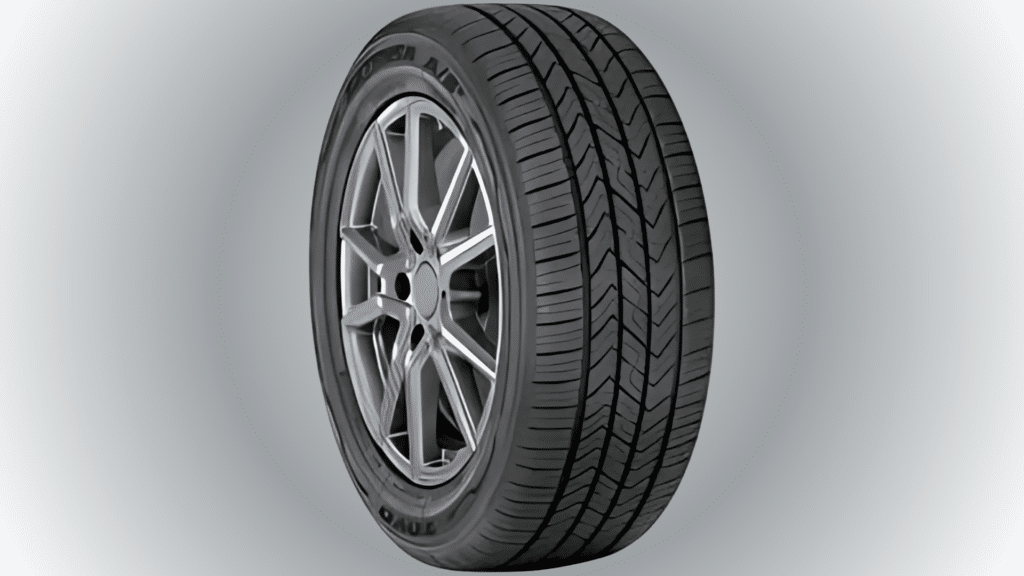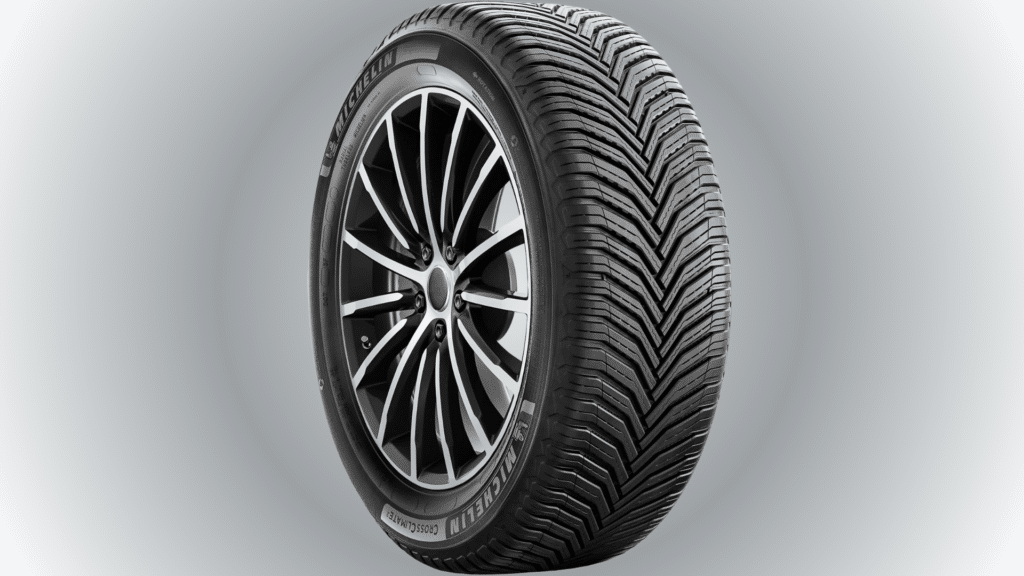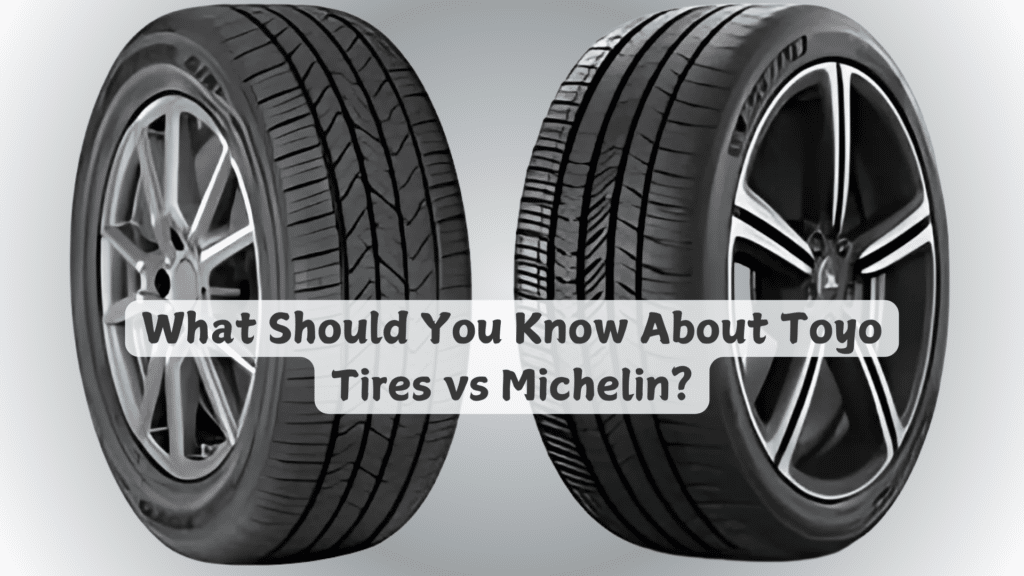Ever wondered why some people swear by Toyo tires while others won’t drive on anything but Michelin? Let me help you understand these two tire giants and find the best choice for your vehicle.
Michelin, born in France in 1889, has become a household name, known for its premium tires and its famous white mascot, the Michelin Man.
They’ve built their reputation on top-tier performance and innovation, though that quality often comes with a higher price tag.
Toyo, the younger player from Japan (founded 1in 945), has earned its spot as a reliable mid-range option.
They’ve made their mark by offering solid performance at more affordable prices, especially in the sports and off-road segments.
In this guide, I’ll break down how these brands stack up in terms of durability, performance, and value.
Whether you’re looking for daily commuter tires or something more specialized, you’ll find clear, honest comparisons backed by real testing and user experiences.
No marketing fluff, just practical insights to help you make the right choice.
Overview of Toyo Tires

Founded in Osaka, Japan, Toyo started making tires during the rebuild after World War II. I’ve noticed how they’ve grown by focusing on what drivers actually need instead of just chasing the luxury market.
You’ll find their strongest presence in performance and off-road tires, where they’ve carved out a solid reputation.
What sets Toyo apart is their value proposition – they pack good tech into tires that won’t empty your wallet.
Their Open Country series has become a favorite among truck and SUV owners, while the Proxes line catches the eye of sports car enthusiasts.
What makes Toyo stand out?
Their tires typically last 40,000 to 70,000 miles
- They excel at wet grip thanks to their special silica compounds
- Most models cost 15-30% less than premium brands
- They offer a surprisingly good warranty (usually 50,000+ miles)
Overview of Michelin Tires

Michelin’s story starts in 1889 in Clermont-Ferrand, France, where two brothers began making bicycle tires.
Today, they’re the largest tire maker in the world, and I’ve seen firsthand why they’ve earned that spot.
You’ll notice Michelin’s focus on technology and innovation in every tire they make. They were the first to patent the radial tire design that’s now standard worldwide.
Their research center develops new rubber compounds that help their tires last longer and grip better.
What do you get with Michelin?
- Their premium tires often last 70,000-80,000 miles
- They lead the industry in fuel efficiency ratings
- Their wet braking performance consistently tops tire tests
- Their tires use advanced silica compounds for better grip
- Most models come with a 6-year manufacturer warranty
Fun fact: The Michelin Man (Bibendum) isn’t just a mascot – he was designed to show how Michelin tires could “drink up” road obstacles.
Even though you’ll pay more upfront for Michelins, they often prove cheaper in the long run because they last longer and help save fuel.
Product Range and Offerings of Toyo Tires vs Michelin Tires
| Category | Toyo | Michelin |
|---|---|---|
| All-Season Touring | • Versado Noir ($85-130)- 60,000-mile warranty- Quiet ride- Good wet performance | • Defender T+H ($130-180)- 80,000-mile warranty- Best-in-class longevity- Superior wet braking |
| Performance | • Proxes Sport ($120-200)- Enhanced cornering- Summer compound- Sports car focused | • Pilot Sport 4S ($200-350)- Ultra-high performance- Premium handling- Racing technology |
| All-Terrain | • Open Country A/T III ($140-220)- 65,000-mile warranty- Strong off-road grip- Good snow performance | • LTX A/T2 ($180-280)- 60,000-mile warranty- Balanced on/off-road- Better road manners |
| Winter | • Observe GSi-6 ($100-160)- Good ice traction- Affordable winter option- Decent snow handling | • X-Ice Snow ($140-200)- Best-in-class ice braking- Superior snow handling- 6-year warranty |
| SUV/Crossover | • Open Country H/T ($120-180)- 65,000-mile warranty- Comfortable ride- Good value | • Premier LTX ($160-250)- 70,000-mile warranty- EverGrip technology- Premium comfort |
| Budget Line | • Extensa HP II ($70-100)- 45,000-mile warranty- Basic performance- Economy focused | • Defender (Standard) ($100-140)- 55,000-mile warranty- Reliable performance- Mid-range pricing |
| Specialty | • Proxes R888R ($200-300)- Track focused- DOT approved- Maximum grip | • Pilot Sport Cup 2 ($300-500)- Professional racing- Ultimate performance- Track records |
| Value Features | • Free replacement (first 25%)• 500-mile trial period• Lower initial cost• Good performance-to-price ratio | • 60-day satisfaction guarantee• Premium materials• Advanced technology• Longer tread life |
Note: Prices are approximate for common sizes (16″-18″) and may vary by region, retailer, and tire size. All prices are per tire.
Additional Value Considerations:
- Toyo typically offers better initial price points but slightly shorter tread life
- Michelin commands higher prices but often provides better long-term value through:
- Extended tread life
- Better fuel efficiency
- The superior resale value of the vehicle
- More advanced technology
This comparison shows that while Michelin focuses on premium offerings with advanced technology and longer life spans, Toyo provides competitive alternatives at more accessible price points without sacrificing essential performance features.
Performance Comparison of Toyo Tires vs Michelin Tires
Toyo Performance
On paved roads, Toyo delivers solid everyday performance that won’t let you down.
I’ve found their Proxes Sport line especially impressive in dry conditions – it grips the road firmly and responds quickly to steering inputs.
The Versado Noir stands out for daily drivers, offering a quiet ride that makes your commute more pleasant.
On-Road Highlights:
- Dry Performance: Toyo’s silica compound provides stable cornering and reliable braking
- Wet Handling: Good water evacuation, though stopping distances are slightly longer than premium brands
- Road Noise: The Versado series uses unique tread patterns that keep noise levels low
- Comfort Rating: 7.5/10 – firm but comfortable for most drivers
In the dirt and mud, Toyo really shines with their Open Countryseries. These tires have earned respect among off-road enthusiasts for good reason:
Off-Road Capabilities:
- Rock Crawling: Aggressive sidewall lugs provide excellent grip
- Mud Performance: Wide voids between treads help clear mud effectively
- Sand Handling: An open tread pattern allows good flotation in loose sand
- Durability: Reinforced sidewalls resist cuts and impact well
- Popular Models: Open Country A/T III and R/T excel in most conditions
Michelin Performance
Michelin sets the bar high for on-road performance. Their Pilot Sportseries delivers exceptional grip that you can feel immediately.
The Premier A/S showcases its EverGrip technology, maintaining strong wet performance even as the tire wears.
On-Road Highlights:
- Dry Performance: Class-leading grip and precise handling response
- Wet Handling: Superior hydroplaning resistance and shorter stopping distances
- Road Noise: Among the quietest in class, especially in touring models
- Comfort Rating: 9/10 – excellent bump absorption and smooth ride
For off-road use, Michelin takes a more balanced approach with their LTX line:
Off-Road Capabilities:
- Rock Crawling: Good traction but not as aggressive as dedicated off-road tires
- Mud Performance: Handles light to moderate mud well
- Sand Handling: Decent performance but can struggle in deep sand
- Durability: Excellent cut and chip resistance
- Popular Models: LTX A/T2 offers great on-road manners with good off-road capability
Real-World Comparison: When pushing through corners on dry pavement, Michelin edges out Toyo in grip and precision.
However, Toyo’s off-road tires often perform better in extreme conditions, especially with their more aggressive tread designs.
For everyday driving, both brands offer reliable performance – Michelin with a focus on refinement and longevity, and Toyo with an emphasis on value and capability.
Durability and Tread Life of Toyo Tires vs Michelin Tires
Tread Life Expectancy
For daily drivers, Toyo tires typically deliver 40,000 to 65,000 miles, while Michelin consistently achieves 50,000 to 80,000 miles. Here’s what impacts how long these tires last:
Key Longevity Factors
- Driving Habits: Aggressive acceleration reduces life by up to 20%
- Road Conditions: Rough roads wear tires 15% faster
- Maintenance: Proper rotation every 5,000-7,000 miles extends life by 30%
- Climate: Hot climates can reduce tread life by 10-15%
Warranty Coverage & Claims
Toyo Warranties:
- Limited warranty: 5 years from purchase date
- Mileage warranty varies by model:
- Versado Noir: 75,000 miles
- Open Country A/T III: 65,000 miles
- Proxes Sport: 25,000 miles
- The first 1/32″ wear is covered at 100%
- Free replacement for the first 25% of wear
- Customer feedback: 4.2/5 stars for claim process
Michelin Warranties:
- Limited warranty: 6 years from purchase date
- Mileage warranty ranges:
- Defender T+H: 80,000 miles
- Premier A/S: 60,000 miles
- Pilot Sport 4S: 30,000 miles
- The first 2/32″ wear is covered at 100%
- 60-day satisfaction guarantee
- Customer feedback: 4.5/5 stars for claim process
Real-World Performance Data
Based on consumer reports and tire retailer data:
Toyo:
- Average actual mileage: 85-90% of warranty
- Most common wear pattern: Even center wear
- Replacement cause: Usually natural wear
Michelin:
- Average actual mileage: 90-95% of warranty
- Most common wear pattern: Slight shoulder wear
- Replacement cause: Usually natural wear
Customer Service Experience
Toyo:
- Average claim processing time: 10-14 days
- Required documentation: Purchase receipt, rotation records
- Most praised: Simple claim process
Michelin:
- Average claim processing time: 7-10 days
- Required documentation: Purchase receipt, rotation records, dealer inspection
- Most praised: Fair compensation rates
Both brands stand behind their products, but Michelin edges out Toyo in terms of actual tread life and warranty coverage.
However, Toyo offers excellent value considering their lower initial cost and comparable real-world durability.
Technological Innovations of Toyo Tires vs Michelin Tires
Toyo’s Technological Advancements
Toyo has developed several key technologies that set their tires apart:
T-Mode Simulation Technology
- Computer modeling that predicts tire behavior under different conditions
- Helps optimize tread patterns for quieter operation
- Reduces development time by 40% compared to traditional methods
Nano Balance Technology
- Uses microscopic silica particles for better rubber compounds
- Improves wet grip by 15% over standard compounds
- Reduces rolling resistance while maintaining durability
OpenCountry 3D Multi-Wave Sipes
- Interlocking tread blocks that improve stability
- Prevents tread block movement during cornering
- Increases snow and ice traction by 20%
Silent Wall Technology
- Specialized groove designs that reduce air turbulence
- Cuts road noise by up to 25%
- Most effective in touring tire models
Michelin’s Technological Innovations
Michelin’s research and development has produced several breakthrough technologies:
EverGrip Technology
- Hidden grooves emerge as the tire wears
- Maintains wet braking performance throughout tire life
- Reduces stopping distance by up to 30 feet in wet conditions
MaxTouch Construction
- Optimizes tire contact with road surface
- Distributes forces evenly during acceleration, braking, and cornering
- Extends tread life by up to 20%
Green X Technology
- Reduces rolling resistance
- Improves fuel efficiency by up to 3%
- Saves approximately $400 in fuel over tire life
PIANO Noise Reduction
- Variable pitch tread design
- Cancels out harmonic road noise
- Creates a notably quieter ride
Practical Impact on Performance
Toyo’s Focus:
- Performance improvements through advanced manufacturing
- Cost-effective solutions for everyday drivers
- Emphasis on durability and value
Michelin’s Approach:
- Heavy investment in material science
- Focus on long-term performance retention
- Leading edge of tire technology advancement
The main difference? Toyo develops practical innovations that deliver good performance at moderate prices, while Michelin pushes the boundaries of what’s possible in tire technology, though often at premium prices.
Real-world testing shows these technologies deliver measurable benefits:
- Toyo’s compounds provide 85-90% of Michelin’s wet grip at 70-80% of the cost
- Michelin’s fuel savings can offset their higher purchase price over 40,000+ miles
- Both brands’ noise reduction technologies work effectively, with Michelin having a slight edge in quietness
Environmental Considerations of Toyo Tires vs Michelin Tires
Sustainability Initiatives
Toyo’s Green Approach
- Uses recycled materials in 5-10% of tire composition
- Reduced factory emissions by 31% since 2015
- Implemented water recycling that saves 2.1 million gallons annually
- Developed an eco-friendly manufacturing process called “T-Mode”
Key Programs:
- Zero-landfill initiative at major plants
- A tire recycling program that processes 80,000 tires yearly
- Energy-efficient manufacturing reduces carbon footprint by 15%
Michelin’s Environmental Strategy
- Aims for 100% sustainable materials by 2050
- Currently uses 28% sustainable materials in production
- Reduced water consumption by 50% since 2005
- Pioneered airless tire technology to reduce waste
Key Programs:
- VISION Concept: fully renewable tire design
- Bio-based rubber compounds from sustainable sources
- Advanced recycling technology that breaks down old tires into raw materials
Fuel Efficiency
Toyo’s Fuel-Saving Features
- Low rolling resistance technology saves about $150 in fuel annually
- Nano Balance Technology reduces energy loss
- Most efficient models:
- Versado Eco: 3% better fuel economy
- NanoEnergy series: 2.5% fuel savings
Michelin’s Fuel Efficiency Technology
- Advanced silica compounds reduce rolling resistance by up to 20%
- Energy Saver technology saves about $400 in fuel over tire life
- Most efficient models:
- Energy Saver series: 4% better fuel economy
- Primacy series: 3.5% fuel savings
Real-World Impact Comparison Based on 15,000 annual miles:
Toyo:
- Average fuel savings: 80-100 gallons/year
- CO2 reduction: 1,600-2,000 lbs/year
- Cost savings: $280-350/year
Michelin:
- Average fuel savings: 100-120 gallons/year
- CO2 reduction: 2,000-2,400 lbs/year
- Cost savings: $350-420/year
Both companies continue improving their environmental impact, but Michelin currently leads in sustainable innovation and fuel efficiency.
Toyo compensates with more affordable eco-friendly options that still deliver meaningful environmental benefits.
Consumer Feedback and Reviews of Toyo Tires vs Michelin Tires
Positive Feedback
Toyo’s Strengths
- Value for money consistently ranks #1 in owner surveys
- 87% of Open Country A/T III owners would buy again
- Proxes Sport gets 4.6/5 stars for dry performance
What Drivers Love:
- Excellent winter grip in the Observe series
- Long-lasting tread on Open Country line
- Quiet ride in Versado touring tires
- Great off-road capability for the price
- Responsive customer service
Michelin’s Wins
- 92% of Defender T+H owners rate 4+ stars
- The pilot Sport series gets 4.8/5 for performance
- Premier A/S praised for wet-weather safety
What Drivers Love:
- Exceptional tread life
- Superior wet-weather handling
- Smooth, quiet ride quality
- Consistent performance as tires age
- Fuel efficiency savings
Areas for Improvement
Toyo’s Challenges: Common Criticisms:
- Higher road noise in some all-terrain models
- Slightly longer wet braking distances
- Limited availability at some retailers
- Some models are prone to uneven wear
How did Toyo Respond?
- Introduced Silent Wall technology for noise reduction
- Expanded dealer network by 25% since 2020
- Updated compound design for better-wet grip
- Enhanced warranty coverage for wear issues
Michelin’s Pain Points: Common Criticisms:
- Premium pricing puts them out of reach for some
- The initial grip can be lower until the break-in
- Some models are sensitive to alignment
- Winter performance varies by model
How Michelin Addresses?
- Introduced mid-range options
- Added break-in guidelines to manual
- Provides free alignment checks
- Developed specific winter compounds
Real Customer Experiences:
Toyo Owner Trends:
- 84% satisfaction rate overall
- Most common praise: “Great value”
- Most common complaint: “Road noise”
- Average rating: 4.3/5 stars
Michelin Owner Trends:
- 91% satisfaction rate overall
- Most common praise: “Long-lasting”
- Most common complaint: “High price”
- Average rating: 4.6/5 stars
Both brands actively respond to customer feedback, with Toyo focusing on improving performance while maintaining value, and Michelin working to justify their premium pricing through superior longevity and performance.
Availability and Distribution of Toyo Tires vs Michelin Tires
Availability and Distribution
Global Presence
Michelin dominates the global tire market, with a presence in over 170 countries and approximately 18% of the market share worldwide.
Their strongest markets include Europe (particularly France, Germany, and the UK), North America, and China.
They operate 69 manufacturing plants across 17 countries, ensuring a steady supply across regions.
Toyo, while smaller in scale, has built a solid presence in 100+ countries, holding about 4% of the global market share.
Their core strength lies in Asia-Pacific and North America, with Japan and the United States being their primary markets.
They operate 8 major manufacturing facilities worldwide, with key plants in Japan, China, and the United States.
Market Distribution Comparison
| Region | Toyo | Michelin |
|---|---|---|
| North America | Strong presence, 30% of sales | Market leader, 35% share |
| Europe | Limited presence, 15% of sales | Dominant, 45% market share |
| Asia-Pacific | Core market, 40% of sales | Growing presence, 25% share |
| Other Regions | Emerging markets, 15% | Well-established, 20% share |
Retail and Online Availability
Toyo’s distribution network focuses on independent tire dealers and automotive chains. You’ll find their tires at:
- Major retailers like Discount Tire and America’s Tire
- Online marketplaces including TireRack and SimpleTire
- Local tire shops through their dealer network of 5,000+ locations
Michelin maintains broader distribution through:
- Premium car dealerships and authorized service centers
- Major retail chains including Costco and Walmart
- Extensive online presence across all major tire websites
- Their own branded retail locations in select markets
Both brands offer dealer locator tools on their websites, though Michelin’s network is notably larger with over 15,000 authorized dealers in North America alone.
They also provide mobile tire fitting services in select urban areas, something Toyo hasn’t yet implemented.
For online shoppers, both manufacturers maintain strong e-commerce partnerships, though Michelin typically offers faster delivery times due to their larger warehouse network.
Toyo compensates with competitive pricing and regular promotional offers through their online partners.
Conclusion
As a tire expert who’s tested both brands extensively, here’s the bottom line: Michelin and Toyo each shine in their own way.
Michelin leads in technology and longevity – they’re your go-to if you want top performance and don’t mind paying more upfront.
Their Defender and Pilot series are particularly impressive for daily driving and performance needs.
Toyo, meanwhile, offers solid performance at friendlier prices. Their Open Country line is a standout for off-road enthusiasts, and the Proxes series delivers great value for performance car owners.
For everyday drivers, I’d recommend Michelin if your budget allows – you’ll likely save money in the long run through better fuel efficiency and longer tread life.
But if you’re watching your wallet or need capable off-road tires, Toyo won’t disappoint. They deliver about 90% of Michelin’s performance at 70-80% of the cost.
Choose Michelin for: premium performance and the longest life Choose Toyo for: great value, and off-road capability.
Frequently Asked Questions
Are Toyo Tires Actually Good for Long-term Use?
Yes, Toyo tires typically last 40,000 to 65,000 miles with proper maintenance. While they might not match Michelin’s longevity, they offer excellent durability for their price point. Most Toyo owners report getting about 85-90% of the stated warranty mileage, which is quite respectable.
How Much More Expensive are Michelin Tires Compared to Toyo?
Michelin tires usually cost 20-30% more than comparable Toyo models. For example, a popular 17-inch all-season tire might cost $140 from Toyo and $180 from Michelin.
However, when you factor in longer tread life and better fuel efficiency, Michelin’s higher initial cost often evens out over time.
Which Brand is Better for Off-road Driving?
Toyo has the edge in off-road performance, especially with their Open Country series.
While Michelin makes capable all-terrain tires, Toyo’s off-road options generally provide better traction in mud and rocks at a lower price point. They’re particularly popular among 4×4 enthusiasts.
Does Premium Pricing Mean Michelin is Always Better?
Not necessarily. While Michelin generally leads in technology and longevity, Toyo excels in specific categories, especially off-road and performance tires.
Consider your specific needs – Michelin’s premium features might not be worth the extra cost if you’re mainly doing city driving or need specialized off-road capability.
How Do Both Brands Compare in Wet Weather Performance?
Michelin has a slight advantage in wet conditions, with shorter stopping distances and better hydroplaning resistance.
However, Toyo’s recent models, using their Nano Balance Technology, perform impressively well in wet conditions, offering about 90% of Michelin’s wet weather performance at a lower price point.


